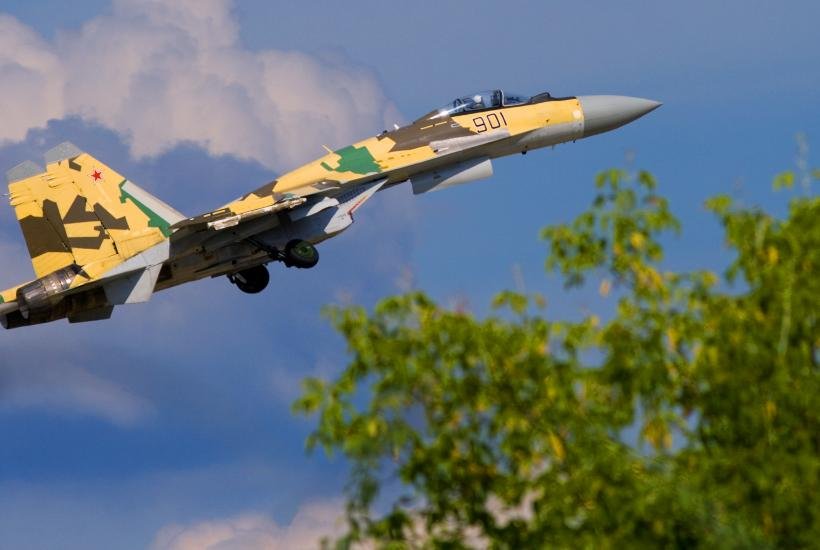
Poland strengthens anti-drone defense
The Polish Ministry of Defense has launched a program to purchase anti-drone systems, known as “Pilna Potzeba Operacyjna/Urgent Operational Need” (PPO). The goal is to quickly increase the armed forces’ ability to defend against drones, which have become one of the most dangerous tools of modern warfare — from reconnaissance to attack models originally designed by Iran, such as those used by Russia in Ukraine.
The decision came shortly after Russian drones repeatedly entered Polish airspace, which provoked a strong response from the public and political leadership. The Polish Ministry of Defense has now declared the situation a security priority and launched a procedure that should allow the purchase of equipment without long administrative delays.
Rapid response to changing threats
The Armaments Agency is the institution that ensures the entire process. According to the Ministry of Defense, the activation of the PPO is a response to the changing security reality and serves to allow the military to immediately respond to crisis situations when standard acquisition processes take too long.
The PPO was formalized by the decision of the Minister of Defense of September 1, 2021 and allows for the rapid purchase of weapon systems if an unexpected threat to state security arises. Typically, these are capabilities that need to be implemented “here and now” to prevent further incidents or attacks.
Kinetic and non-kinetic solutions
Two main institutions are responsible for the implementation of the program. Agencja Uzbrojenia ensures the purchase of so-called kinetic systems, i.e. means that destroy targets by physical impact — for example, artillery or rocket fire. These can be systems similar to the 35 mm self-propelled guns produced by the Polish company PIT-RADWAR, or modern short-range guided missiles.
On the other hand, the Inspectorate of Unmanned Military Systems Armaments/Inspectorate of Unmanned Military Systems Armaments is in charge of so-called non-kinetic solutions. These include electronic warfare technologies — jammers, microwave emitters or lasers that disrupt the navigation and communication channels of drones, or directly destroy them by affecting their electronics. The two approaches complement each other: kinetic systems are effective against larger drones, while non-kinetic technologies represent a more flexible defense against smaller and cheaper FPV drones that can be deployed on a mass scale.
Part of layered defense
The new anti-drone systems will not be a separate chapter, but part of a broader system of Polish air defense, which is gradually being built in several layers. In recent years, Poland has launched the following programs:
• Wisła – medium range (Patriot PAC-3 MSE)
• Narew – short range
• Pilica and Poprad – very short range
In addition, the combination of Pilica systems creates a complex unit that connects Polish Piorun missiles with British CAMM missiles. Anti-drone systems should complement these layers and cover the gaps that classic air defense systems cannot handle – especially low-flying, slow or swarming targets.
According to experts, effective anti-drone defense can only be multilayered and networked. Drones differ in size, speed and control method, and no single system can effectively cover the entire spectrum of threats.
Reaction to Russian Shahed drones and new types of FPV
Warsaw does not hide the fact that the current PPO is primarily responding to the threat of Geran 2/3 unmanned aircraft, which Russia uses in attacks on Ukraine and whose debris has fallen on Polish territory several times.
Poland therefore does not want to wait for the results of long-term modernization programs, but wants to quickly acquire the ability to detect, disrupt and destroy these threats. At the same time, the development or purchase of systems designed to combat small FPV drones, which are becoming an increasingly common means of tactical sabotage, is being considered.
These smaller devices are cheap, difficult to detect and often controlled from a short distance, so the army must respond to them primarily with non-kinetic methods – signal jamming, electromagnetic pulse or the deployment of its own defense drones.
The rapid PPO procedure will allow for the immediate purchase of equipment, but it does not address all the practical aspects of its implementation. Each new system requires trained personnel, logistical support and maintenance infrastructure.
The Polish army has been massively expanding its armament in recent years: in addition to American Patriots and South Korean K9 howitzers, it is buying Abrams and K2 tanks, F-35 aircraft, and now new air defense systems. The question therefore remains whether it will have sufficient capacity to handle parallel operator training and service facilities for anti-drone technologies, which are developing rapidly and often require specific software updates or integration with radar networks.
Domestic industry versus foreign suppliers
The Ministry of Defense has not yet announced what specific types of systems it plans to purchase. However, it stated that it is considering offers from both Polish and allied manufacturers.
Poland has growing know-how in the field of air defense – companies such as PIT-RADWAR, WB Electronics or PGZ are already developing their own sensors and laser systems. Involving domestic industry could increase self-sufficiency and simplify service support. On the other hand, time pressure also favors fast foreign solutions that can be deployed immediately.
A pragmatic step, but a long way to go
Warsaw’s decision to launch a PPO for anti-drone systems is a logical and necessary step at a time when unmanned threats are becoming an everyday reality. The Ukrainian conflict has shown that even cheap drones can paralyze infrastructure and unsettle civilians hundreds of kilometers from the front.
PPO allows for a rapid response, but is not a substitute for a long-term defense concept. Without clear integration, ongoing training and domestic know-how, the systems risk becoming isolated “islands” in the mosaic of Polish defense.
On the other hand, Poland has become the most active European investor in defense in recent years, ambitiously aiming to spend over 4% of GDP. If it can successfully integrate anti-drone systems into its layered shield, it could become a model for other NATO states facing a similar threat.
Peter North


















